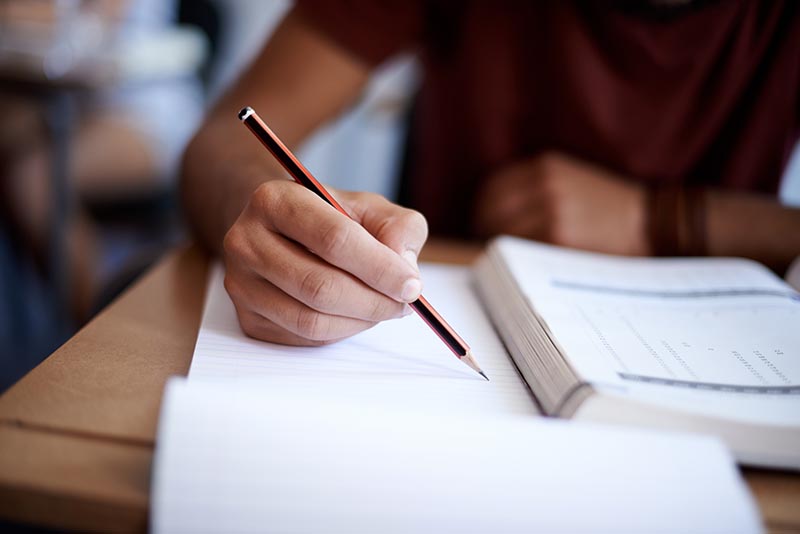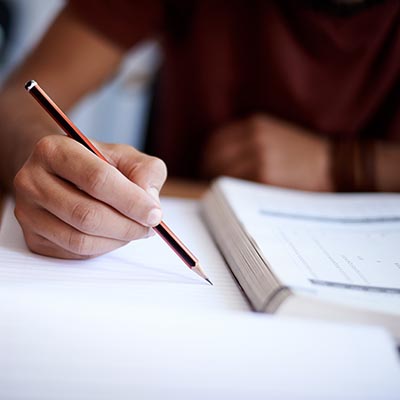
Today’s the day. There’s a lot riding on this exam. Your heart is racing, your breathing is shallow, and your mind is running wild with different scenarios of what will happen if you don’t perform.
Like many people, you may have experienced a range of emotions, thoughts, and even physical sensations before a test. This could range from a mild unease that cramming the night before wasn’t going to get you to the grade you needed, all the way to full-blown anxiety before going to your learner’s permit test, entrance exam, or job interview.
Test anxiety is increasingly common in today’s performance-oriented world. Whether you were (or were not!) prepared for the exam, that inner turmoil was likely an unwelcome distraction that might not have helped how you performed. Anxiety affects attention, which affects ability to consolidate and store memories, as well as ability to recall memories.
But what would it be like to have more stability and emotional reserves? If instead of mild to severe anxiety and the unhelpful distraction it causes, you were more resilient, strong, and at ease? Meet mindfulness.
What is mindfulness?
Mindfulness, or “paying attention on purpose” and calmly acknowledging and accepting your feelings, can be the study aid you never knew you needed. Research about mindfulness has led to discoveries about how it can help students by improving working memory, reduce medical student stress, and improve resilience during test time.
There is even a strong correlation between student trait mindfulness and academic achievement, further supporting the idea that present moment awareness of experience with curiosity, one way to describe mindfulness, can be beneficial.
Research will often use biological measures, like heart rate variability, indicative of students’ ability to effectively manage stress. And in fields like medicine, mindfulness has been shown to positively influence compassion in decision making. The effects of taking a mindfulness program have been shown to persist in graduate students six years later, even when some of the participants no longer formally practice meditation.
Sounds pretty great, right? So, how does this mindfulness thing work, and how do you get started? I’m glad you asked!
3 simple steps to start a mindfulness practice
1. Time
Just as you wouldn’t begin training for a marathon the night before the event, starting a mindfulness practice just before a test doesn’t give time to see the potential gains. Cramming may put some facts into short-term memory, but mindfulness takes more than one short session to be truly beneficial.
Like playing a musical instrument, you get better with practice. You develop more skillfulness and ability to apply when you need it the most with repetition. Tie meditation practice to something you do every day, like waking up or before you brush your teeth, rather than a time on the clock. This connects the practice to an already-established daily activity, and can foster mindfulness becoming part of your routine. “Routine” here means “regular,” not “mindless”! Practicing mindfulness techniques to prepare for a test makes it easier for you to utilize those same techniques right before or during a test.
2. Location
Noises, the proximity of other people, or habits of checking social media may draw attention away from being present. That’s normal, and even expected. So do your best to find a location as well as time that limits those distractions, knowing that conditions don’t have to be perfect. Being aware of background sounds and not struggling against them, for example, can be a wonderful mindfulness practice. Ideally, find a location to practice mindfulness that will be similar to the location of your test, such as practicing at a desk or table with some light background noise. This will increase your ability to practice mindfulness once you’re in the testing environment and lessen your anxiety.
3. Practice
Your actual practice can be as simple as taking five or more minutes to listen to sounds around you. Follow the sensations of breathing in and breathing out as they occur wherever you feel them most in the body. Attention will wander, you’ll notice it’s moved, and you’ll gently bring it back without having to give yourself a hard time about it. Just this open attention starts building a foundation of awareness, meeting what’s happening, and making a choice about how you are in that moment. Linking practicing mindfulness to your other test preparation can both lessen test anxiety and increase your coping skills.
You can do it
While stress may come up during test time, the capacity to meet it mindfully is already something you can do. It’s part of being human. With practice, mindfulness meditation may reduce your stress, improve scores, and positively influence how you meet each moment in life.

By Ted Meissner
Meditation Teacher, Sanvello
Ted Meissner has been a meditator since the early 90s, presenting and teaching science-based mindfulness in person at national conferences and online at international summits. He is a UMass Medical School Center for Mindfulness Certified MBSR Teacher and has been published in Perspectives on Psychological Science, Mindful, The International Journal of Whole Person Care, as well as made appearances in numerous books on contemplative practice. Ted has been podcasting for over ten years with over two million downloads of his conversations with neuroscientists, teachers, and authors, and can be heard on Present Moment: Mindfulness Practice and Science. His IT management career spans over twenty-five years for companies like Xcel Energy, IBM, and UnitedHealth Group, and his particular interest is how mindfulness can influence daily life.
